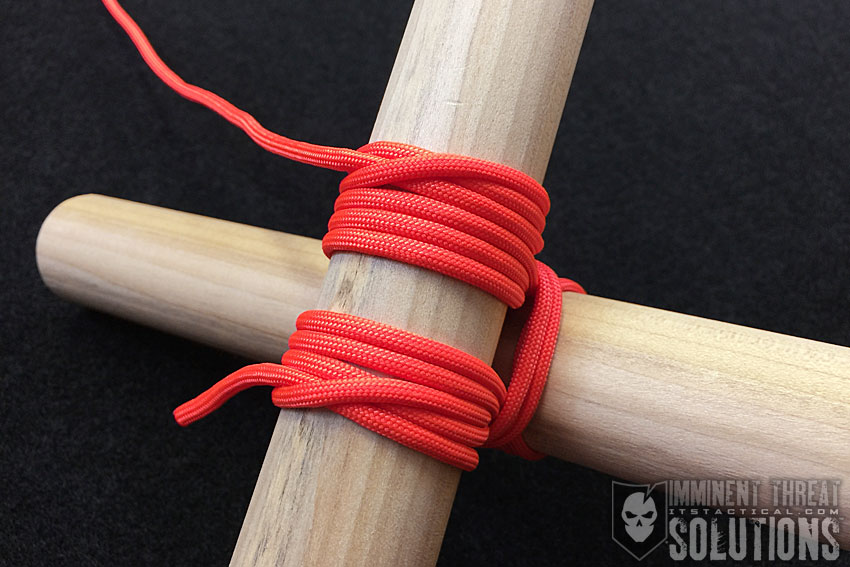

Lashings are an often overlooked part of a balanced knot tying curriculum and extremely important in constructing weight bearing structures. Properly applied, lashings can handle an enormous amount of weight.
In today’s Knot of the Week, we’re starting with the most common type of lashing, the Square Lashing. Used to bind two spars together, it’s important to always use natural fiber rope and natural wood (meaning fresh cut or strong dead wood.)
As shown in the photo above, I’ve used paracord and dowel rod for demonstration, but this should never be used on weight bearing structures. It will slip too easily.
Boy Scouts utilize lashings on their intricate and massive pioneering projects and commonly use cedar spars. The combination of cedar and natural fiber rope, really bites well and create lasting structures capable of supporting weight well.
(Strength: 5/Security: 4/Stability: 3/Difficulty: 3) See below for what these ratings mean.
Strength/Security/Stability/Difficulty
Each knot will be assigned a rating from 1-5 (1 representing the lowest score) based on the following four properties:
Strength – All knots will weaken the strength of a rope, however, there are knots that are stronger than others. The scale here will reflect how strong the rope remains with the specified knot.
Security – The security scale refers to how well the knot will stay tied, and resist coming loose under a normal load.
Stability – Stability refers to how easily the knot will come untied under an abnormal load (i.e. the knot being pulled in a direction it was not intended to) A lower score here represents instability.
Difficulty – The lower the number, the easier a knot is to tie.

Do you enjoy witty banter and nostalgic geekdom all while sipping on a fine aged scotch? Then you’ll love our podcast!

Shop the ITS Store for exclusive merchandise, equipment and hard to find tactical gear.

Discussion